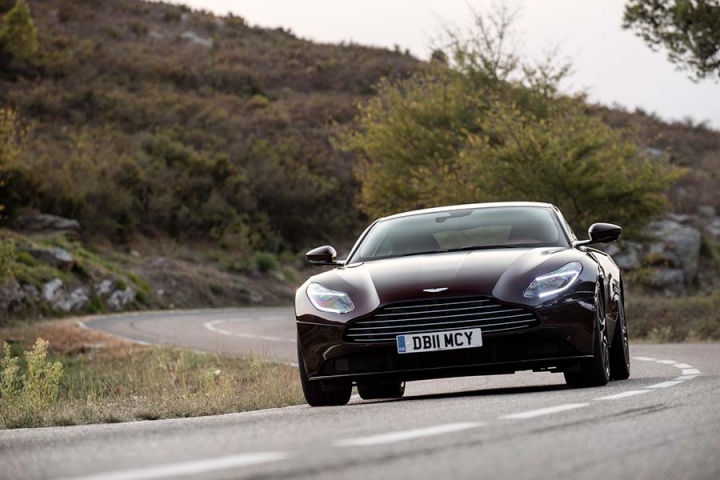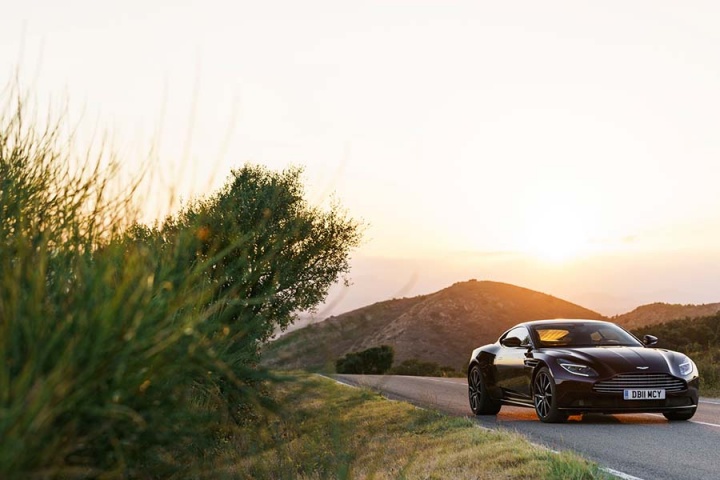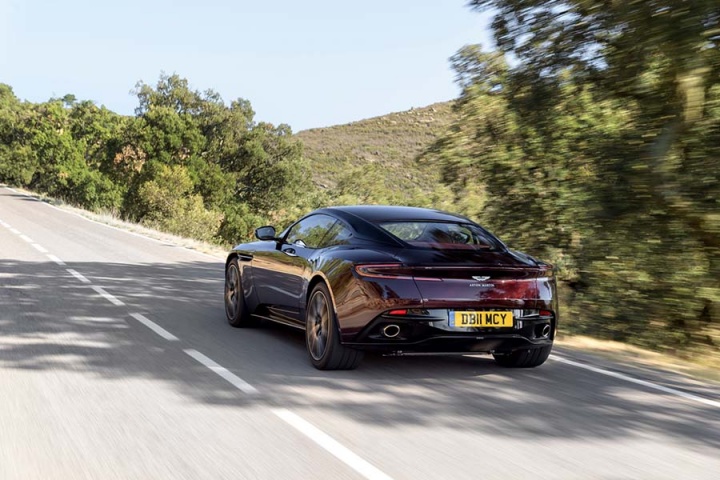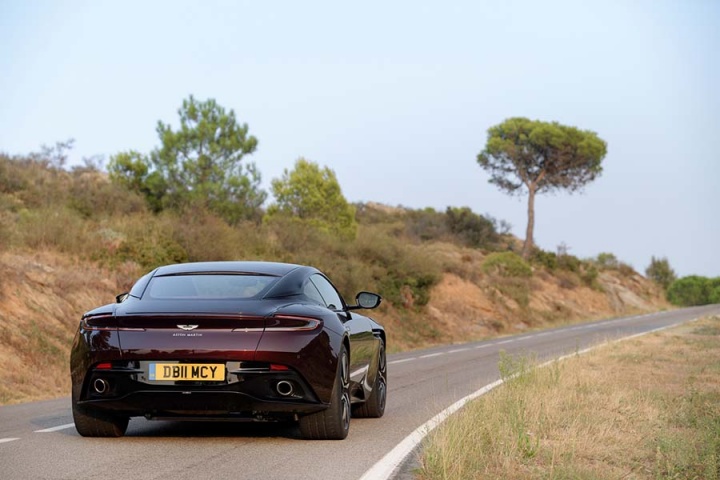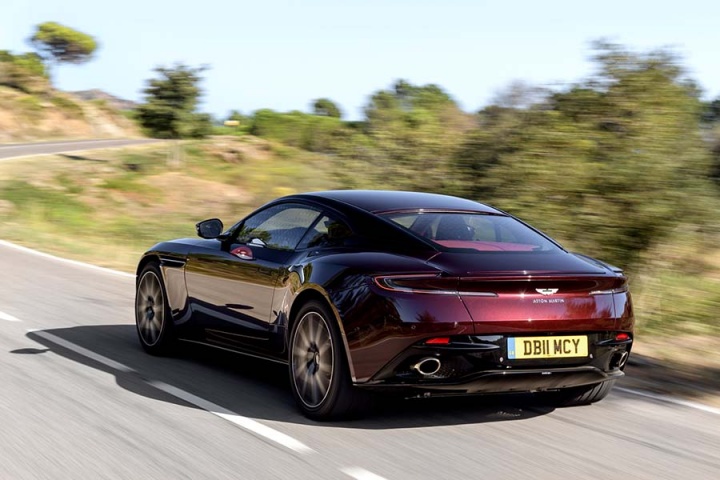So, imagine the situation where the price of a car is irrelevant to you. You walk into an Aston Martin showroom and you really fancy the look of the DB11 coupe. A salesman swaggers over and asks whether you'd like the V12 or the V8. Stupid question? Why wouldn't you have the bigger, grander powerplant? There are many reasons. Read on as we test drive the exhilarating, engaging new V8-engined Aston Martin DB11.
In the metal
When we test drove the Aston Martin DB11 for the first time last year, we declared our admiration for the sharp new design direction the company was taking. Not much has changed for the V8-engined model on the surface. There's a unique alloy wheel finish, darkened headlamps and just two bonnet vents (in black or titanium-finish mesh) to the V12 model's four. In reality, the money that buyers will spend on personalising their DB11 (V12 or V8) will result in bigger differences. The interior is no different whatsoever, so buyers of the V8-engined DB11 can choose the same option packs, 'Designer Specification' packages and, of course, the high-end 'Q by Aston Martin' customisation.
Perhaps more pertinently, the new DB11 V8 is a useful 115kg lighter than its V12 sibling and, as most of that comes from the engine and coolers, a shift in the weight distribution backwards, so the split is 49/51 front to rear.
Driving it
We hate to do this, but I have to tell you that this is not a conclusive and definitive review. The only reason for that, despite some four hours at the wheel of the car, is that the weather was (despite the sun in the images accompanying this report) atrocious at the Spanish launch location. It rained, a lot. That, you might think, would give us a better understanding of how the V8-engined DB11 drives in Irish conditions, but the Spanish tarmac became a greasy and slippery mess. So yes, we learned what the car is like in a traction-limited situation, but it certainly wasn't as full a test drive as we would have liked.
Nonetheless, the signs are good. Despite the low-grip surface, the V8 DB11's Bridgestone tyres on the front axle refused to relinquish their purchase on the road, giving you confidence to maintain a decent pace across country despite the weather. In fairness, the rear tyres were working hard. As was the traction control system and the rear differential. It required a good deal of self-restraint and circumspection to get the most from the car and not just frustratingly bounce off the electronic nannies all the time. Once you realise that the inherent balance of the car is spot-on and you can lean on the tyres, however, it becomes a whole lot of fun. The throttle has lots of travel, making meting out the power easy, and the steering is quick-witted without being nervous. That's thanks to detail changes to the rear suspension, actually, which makes the car feel a tad shorter.
There are three different levels of damping to choose from, though we barely waivered from the softest (GT) setting because of the conditions - other than to explore Aston's claims that there's a more noticeable gap between GT, Sport and Sport+. And the DB11 really lives up to its GT billing in its default guise, maintaining good control of body and wheel movements while allowing the whole car move and flow with the road surface. If anything, it's more impressive the faster you go.
And the V8 engine will help you with that. Peak figures of 510hp and 675Nm of torque are substantial by any measure, and they really aren't THAT far behind the V12's outputs. More importantly, this engine gives the DB11 a lovely long-legged character in the mid-range that allows you lope along at high speed with little or no real effort, yet real fireworks if you take control of the (excellent) eight-speed automatic transmission and chase the red line. Aston Martin doesn't shy away from the fact that the V8 comes from Mercedes-AMG, but it has clearly retuned the 4.0-litre unit to its own taste, and it sounds very different, somehow less turbocharged sounding and, gloriously, very much a V8. It's worth noting that Aston does not use any stereo enhancement of the engine sound, even when there are gratuitous pops and bangs on the overrun in Sport+ mode.
What you get for your money
This section of the review is almost pointless at this end of the spectrum. No buyer of an Aston Martin DB11 scrimps and saves and wonders if they can afford it. Hence the decision between V8 and V12 doesn't come down to the price differential. And the equipment count is identical between them too. In reality, there will be plenty of V8-engined DB11s with enough options and personalisation to take them above the base V12 model in terms of price. There is no logical way to measure the 'value' of a car like this.
Summary
The V8 vs. V12 quandary will come down more to personal taste than affordability for Aston Martin DB11 buyers. Both cars are exciting and accomplished - a real occasion to drive. The V8, thanks to its lower weight and tweaked dynamics, seems to be the slightly sportier and more agile option, but not by a drastic margin, certainly not in the conditions we experienced it in. However, it's a thrilling car even when you are limited by the weather, which is arguably half the battle won.









